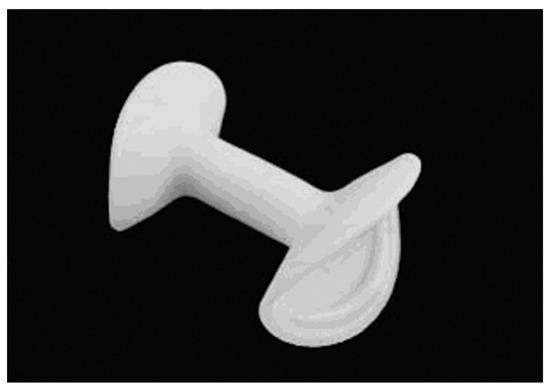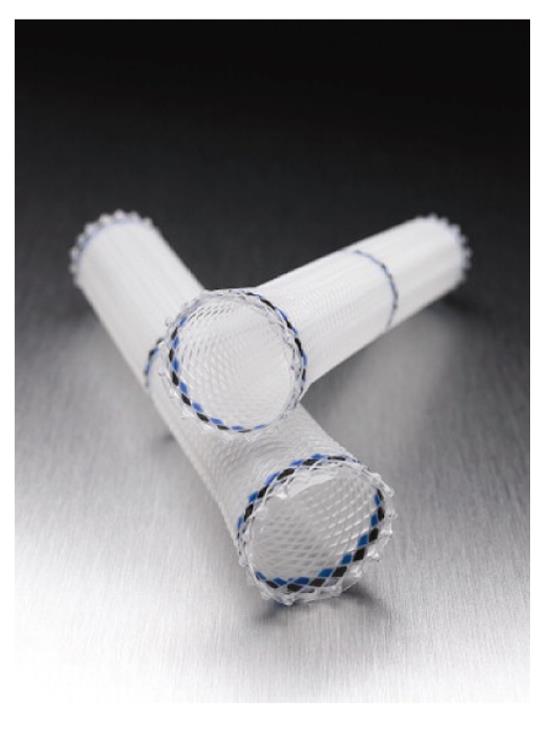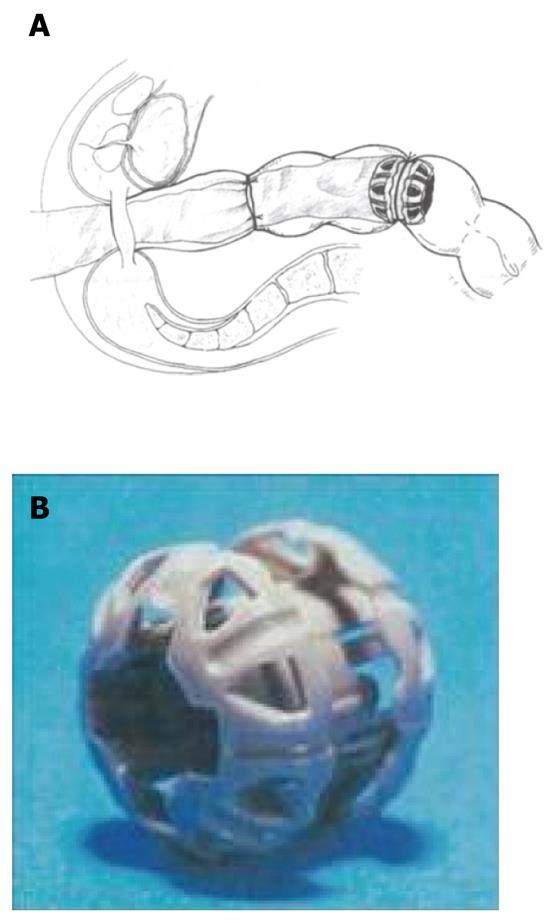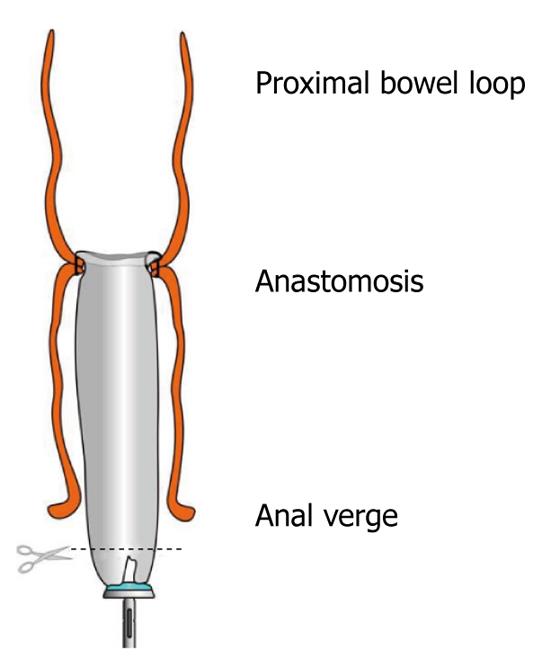Copyright
©2011 Baishideng Publishing Group Co.
World J Gastroenterol. Oct 28, 2011; 17(40): 4461-4469
Published online Oct 28, 2011. doi: 10.3748/wjg.v17.i40.4461
Published online Oct 28, 2011. doi: 10.3748/wjg.v17.i40.4461
Figure 1 Transanal stent.
Figure 2 The Coloshield.
A: The coloshield is sutured to the submucosa of the bowel proximal of the anastomosis; B and C: Slight traction is placed on the coloshield and it is cut so that it lies in the rectal ampulla.
Figure 3 Polyflex stents with a proximal flare.
Figure 4 Murphy’s button.
John Benjamin Murphy developed his device in 1892 as a quick and safe method of intestinal anastomosis. The steel Murphy button had two rounded heads mounted on hollow shafts. After the intestinal ends were tied on the shafts, the heads were screwed together to compress the tissue.
Figure 5 Valtrac-secured intracolonic bypass device.
A: Rough colorectal anastomosis with large gaps between sutures protected by the intracolonic bypass; B: Biofragmentable anastomosis ring.
Figure 6 C-seal: A biodegradable drain protecting the anastomosis.
- Citation: Morks AN, Havenga K, Ploeg RJ. Can intraluminal devices prevent or reduce colorectal anastomotic leakage: A review. World J Gastroenterol 2011; 17(40): 4461-4469
- URL: https://www.wjgnet.com/1007-9327/full/v17/i40/4461.htm
- DOI: https://dx.doi.org/10.3748/wjg.v17.i40.4461














